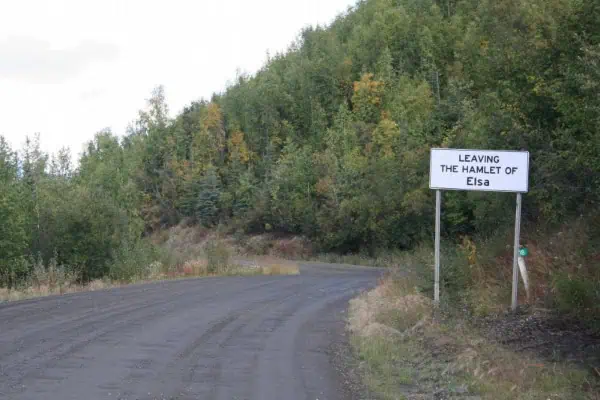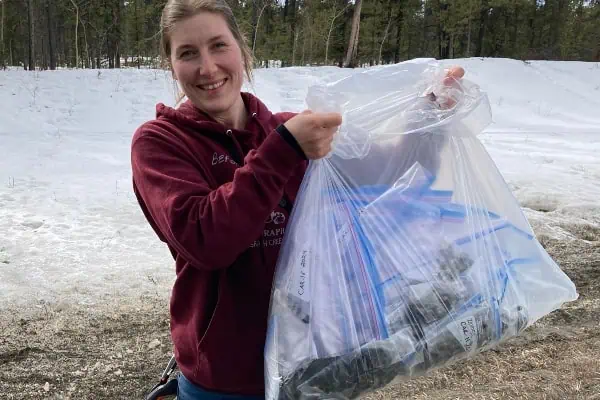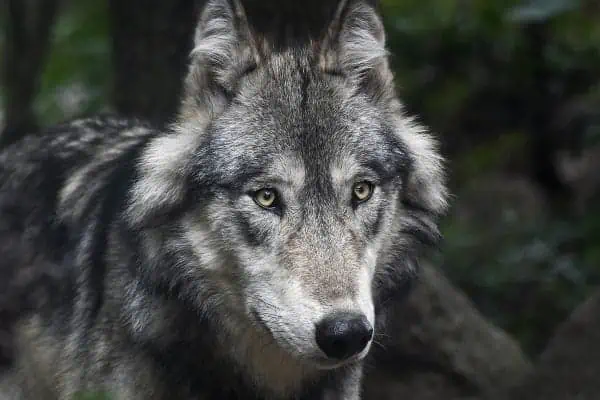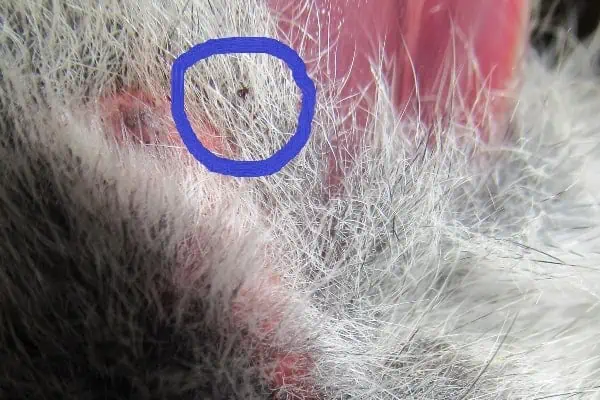One of the two beavers on Twin Lakes Park Lake. Lisa Martin is in the foreground, kayaking
It may be hard to visualize, but there was a genus of beaver the size of a black bear (and some horses were as small as German shepherds). It is amazing to see what natural selection has done, as well, and will continue to do as our planet undergoes climate change.
Biology, combined with wildlife management, is one of the most interesting as well as complex sciences on Earth. In my 10 years, as a conservation officer, I spent considerable time in beaver management that included live-trapping and relocating—blowing dams that were flooding farmlands, roads, etc. Finally, I learned first-hand when I decided to raise a small beaver, before its eyes were open, until it was in excess of 40 pounds … but that’s a story for my book, when I finally get it finished.
In Canada, the beaver is the largest member of the rodent family. The largest beaver I ever live-trapped was 63 pounds.
There are, of course, many fallacies about the beaver. One fallacy is its ability to fall a tree to the very spot it wants to. In reality, should the tree fall in the direction of its dam (for construction), it is 100 per cent pure luck. I do, however, have to give the beaver some credit for its intelligence … I have witnessed a beaver cutting down trees a fair distance from the beaver pond. Then it started to dig a ditch about three-feet wide—deep enough to float some of the branches out to the pond.And as for choosing the best location to build a dam (just as for choosing the location for falling trees), it is only by chance that dams hold back a large body of water (rather than by intelligent selection). The longest and oldest dam I ever saw, in northern Ontario, measured 1,400 feet long and seven feet high. It held a large body of water that contained two beaver houses, one on each side of the pond.In my patrol area in eastern Ontario, over a period of two years, I watched a family of beavers build a giant of a beaver house out of sticks, mud and stones. The final pictures I took of it showed the “house” seven feet above the water’s surface. Another conservation officer and I opened up one such lodge, after we had blown the dam, to gain a better understanding of a beaver house.
I could actually crawl down into the den. A beaver never stops enlarging their house with mud and sticks to accommodate their family. When baby beavers are born, typically around April, other young beavers, who have been part of the family for just a year, stay with the family, but those that have reached about two years of age are ushered out of the house and are then on their own.There is another fallacy that beavers eat only bark. This, I assure you, is a fable. Bobby The Beaver (the one I raised) had a varied vegetarian diet. His home was in a small pond in our backyard. Often he would escape from his fenced-in home, invade the neighbours’ gardens and berry patches, and feast on some of the best agricultural products to be found in the neighbourhood. During the fall, beavers work hard at falling trees, dragging the branches and securing them at the bottom of the pond. In winter, beavers use tunnels they have made in the bottom of a river or pond bed. They travel through these to feast on branches for up to 15 minutes at a time and then return to their dens to fill up on some much-needed oxygen.Have you ever wondered how many other species rely on the beaver building its dam and creating a small lake? Actually, the beaver pond ultimately serves as a “dinner table”—for just about every species that flies, walks, swims or crawls—and plays an important factor in the future of all wildlife.




